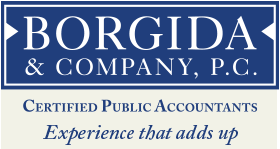1) The Roth 401(k) Plan Has a Higher Contribution Limit that a Roth IRA
Taxpayers can contribute up to $5,000 per year into a Roth IRA. Taxpayers over age 50 can contribute an additional ‘catch-up’ contribution of $1,000 for a total of $6,000. To contribute to a Roth IRA you need to have earned income at least up to the amount of the contribution. Earned income is from wages as an employee (Form W-2) or self-employment in a sole-proprietorship, partnership or limited liability company where you are working. The 401(k) Plan or Roth 401(k) Plan however allows employees to contribute up to $17,500 annually beginning in 2013. Additionally employees over age 50 can make a ‘catch -up’ contribution of $5,500 for a total of $23,000. This allows taxpayers to put significantly more into their retirement accounts.
2) Lower Income Taxpayers Don’t Need the Tax Deduction
Lower income taxpayers generally don’t need tax deductions. With a 401(k) Plan the contributions are made on a tax deductible basis. With a Roth 401(K) Plan contributions are made on an after tax basis. The tax is being paid up front. When distributions are made, if the account meets the criteria, the distributions will be tax-free.
3) Middle Income Taxpayers Will Have a Choice
Actually all employees have a choice. They can put all of their contributions into the 401(k) or Roth 401(k). Alternatively they can put some of their contributions into each plan. Lower income and higher income taxpayers both have compelling reasons to use the Roth 401(k). The lower income taxpayers don’t need the tax deduction the 401(k) plan offers. Higher income taxpayers may not have the opportunity to contribute to a Roth IRA. Depending on their situation and objectives, middle income taxpayers might want to utilize both plans.
4) Higher Income Taxpayers Aren’t Eligible for a Roth IRA
A married couple filing a joint return is eligible to fund a Roth IRA if their Modified Adjusted Gross Income under $173,000 in 2012. A partial contribution is allowed when income is between $173,000 and $183,000. No contribution is allowed when it exceeds $183,000. A Roth 401(k) Plan will allow higher income earners the ability to participate in a Roth. If the employer has an employer match, this must be made to the 401(k) plan, not the Roth 401(k) Plan.
Employers, are you considering adopting a Roth 401(k) Plan?
Please leave your comments below.
Photo From Creative Commons.


